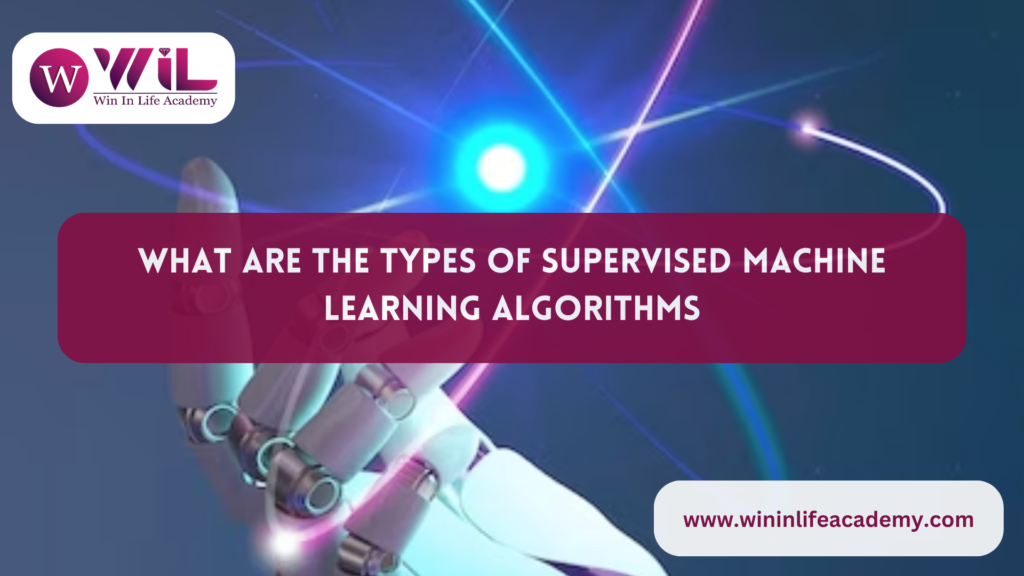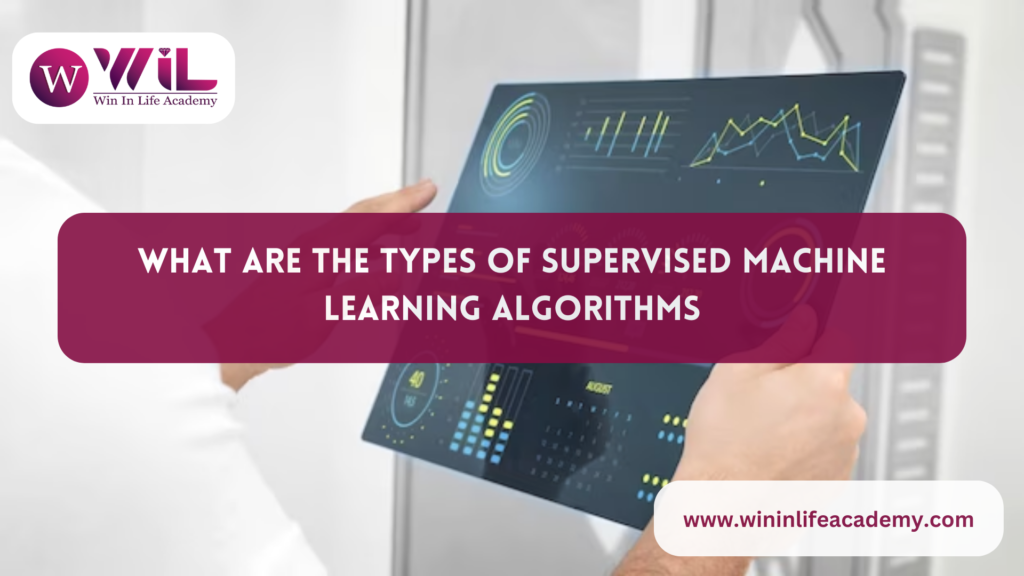Supervised machine learning algorithms are designed to learn patterns and make predictions based on labeled training data. The algorithm is provided with an input data set (features) and the corresponding right output data set (labels or target values). The goal is to train a model using this labeled data so that it can accurately predict the output for new, unseen data. In this blog post, we would be understanding examples of supervised machine learning.
You can consider a dataset of housing prices with features like square footage, number of bedrooms, and location, along with their corresponding prices. By using a supervised learning algorithm, such as linear regression, the model can learn the relationship between the input features and the target variable (price). Once trained, the model can take new, unseen data, like the features of a new house, and predict its price. This enables real estate agents or buyers to estimate the price of a house based on its characteristics, leveraging the learned patterns from the labeled data.
Types of supervised machine learning algorithms
There are two main types of supervised machine learning algorithms: regression and classification. Regression algorithms are used to predict continuous variables, such as weather forecasting, market trends, etc. Classification algorithms are used to predict discrete variables, such as image recognition, spam detection, etc.

Here are some common algorithms which explain the supervised machine learning types to make you understand algorithm:
- Linear Regression: Linear regression is a simple and widely used algorithm for predicting a continuous target variable. It establishes a linear relationship between the input features and the target variable by fitting a line to the data points that minimizes the sum of squared differences between the predicted and actual values.
- Logistic Regression: Logistic regression is used when the target variable is binary or categorical. It estimates the probability of an event occurring by fitting the data to a logistic function. The output is a probability score between 0 and 1, which can be interpreted as the likelihood of the data belonging to a particular class.
- Decision Trees: Decision trees are the simplest and easy to understand algorithms which can be used for both classification and regression types of problems. They build a hierarchical structure of decision nodes and leaf nodes, where each internal node represents a feature test, and each leaf node represents a class label or a numerical value. Decision trees are used in case of both categorical and numerical data.
- Random Forest: Random forest is an ensemble learning method that combines multiple decision trees to make predictions. Each tree is built on a random subset of the training data and a random subset of features. The final prediction takes into account the total of the predictions of individual trees. Random forests are effective in handling high-dimensional datasets and can provide good generalization and robustness.
- Support Vector Machines (SVM): SVM is a powerful supervised machine learning types algorithm used for classification and regression tasks. It finds an optimal hyperplane in a high-dimensional feature space that separates the data points of different classes with the largest margin. SVMs can handle linear and non-linear data by using different kernel functions.
- Naive Bayes: Naive Bayes is a probabilistic classifier based on Bayes’ theorem with an assumption of independence among the features. Despite its simplistic assumption, it often performs well in text classification and other tasks. Naive Bayes models are efficient and require a small amount of training data.
- K-Nearest Neighbors (KNN): KNN is a non-parametric supervised machine learning types algorithm used for both classification and regression. It predicts the label or value of an instance by considering its k nearest neighbors in the training data. The choice of k and the distance metric used are important parameters in KNN.
Above is a list of algorithms which explain examples of supervised machine learning algorithms. Each algorithm has its own strengths, weaknesses, and suitability for different types of data and problem domains. Choosing the right one from the supervised machine learning algorithms list depends on the specific task, the available data, and the desired outcome.
Supervised machine learning algorithms: A systematic comparison

Let us have a look at supervised machine learning algorithms classification and comparison which explains their pros and cons at a glance:
| Algorithm | Suitable for | Pros | Cons |
| Linear Regression | Predicting continuous numerical values. | Simple and interpretable, computationally efficient. | Assumes a linear relationship between features and target variable, may not capture complex patterns. |
| Logistic Regression | Binary or multi-class classification tasks | Efficient and interpretable, outputs probability scores | Assumes linear decision boundaries, may not handle non-linear data well |
| Decision Trees | Classification and regression tasks, handling both categorical and numerical data. | Intuitive and interpretable, can capture complex interactions, handles missing values. | Prone to overfitting, sensitive to small variations in data. |
| Random Forest | Classification and regression tasks, handling high-dimensional data. | Robust, reduces overfitting through ensemble of decision trees, handles missing values. | Less interpretable than individual decision trees, computationally expensive for large datasets. |
| Support Vector Machines (SVM) | Binary or multi-class classification tasks, linear or non-linear data | Effective in high-dimensional spaces, handles non-linear decision boundaries | Computationally expensive for large datasets, sensitive to noise and outliers |
| Naive Bayes | Text classification, spam filtering, and other probabilistic classification tasks. | Simple and computationally efficient, works well with high-dimensional data, and handles missing values. | Assumes independence among features, may not capture complex relationships. |
| K-Nearest Neighbors (KNN) | Classification and regression tasks, handling both categorical and numerical data. | No training phase, flexible decision boundaries, handles non-linear data. | Computationally expensive for large datasets, sensitive to irrelevant and noisy features, requires appropriate choice of k and distance metric. |
Supervised Machine Learning Algorithms Classification And Comparison
Difference Between Supervised and Unsupervised Machine Learning
The above tabular comparison helps us to understand examples of supervised machine learning algorithms. It would benefit us to know what is the difference between supervised and unsupervised machine learning. The differences with the examples of supervised and unsupervised machine learning lies in the type of data they work with and the objectives they aim to achieve.

Supervised Learning
Data: In Supervised machine learning types of algorithms require labeled training data, where both input variables (features) and their corresponding output variables (labels or target values) are known.
Objective: The goal of supervised learning is to train a model to make accurate predictions or classifications on new, unseen data. The model learns from the labeled data and generalizes the patterns or relationships to make predictions on similar instances.
Examples: Classification (predicting discrete classes), regression (predicting continuous values), and sequence prediction (e.g. Natural language processing) are common tasks which explain the examples of supervised machine learning algorithms.
Unsupervised Learning
Data: In case of unsupervised learning algorithms, only the input variables known as features are provided to the algorithm, and the output variables are unknown.
Objective: The objective of unsupervised learning is to discover hidden patterns, structures, or relationships in the data without any predefined labels or target values. It aims to uncover insights, find clusters or groups, or reduce the dimensionality of the data.
Examples: Clustering (grouping similar instances together), anomaly detection (identifying abnormal or outlier instances), and dimensionality reduction (compressing or summarizing data) are typical tasks in unsupervised learning.
In summary, examples of supervised machine learning algorithms uses labeled data to train models for prediction or classification tasks, while unsupervised learning analyzes unlabeled data to uncover patterns or structures without specific target values.
Conclusion
In conclusion, examples of supervised machine learning algorithms play a crucial role in the field of artificial intelligence and data analytics. These algorithms have the ability to learn patterns and relationships from labeled training data, enabling accurate predictions and valuable insights.
Supervised learning algorithms have proven to be effective in various domains, including image and speech recognition, natural language processing, recommendation systems, fraud detection, and medical diagnosis. They have the capability to handle both numerical and categorical data, making them versatile in different application scenarios.
The success of supervised machine learning algorithms lists lies in their ability to generalize from training data to make predictions on unseen data. However, the quality and representativeness of the training data, the choice of the appropriate algorithm, and careful parameter tuning are crucial factors for achieving optimal performance.
As technology advances and datasets grow larger and more complex, the development and improvement of supervised learning algorithms continue to be a focus of research. These algorithms have transformed many industries by automating tasks, enhancing decision-making processes, and uncovering hidden patterns in data, ultimately driving innovation and progress in various fields.
To Understand data analytics and learn more, enroll now at Win in Life Academy.






I loved you even more than you’ll say here. The picture is nice and your writing is stylish, but you read it quickly. I think you should give it another chance soon. I’ll likely do that again and again if you keep this walk safe.
I just could not leave your web site before suggesting that I really enjoyed the standard information a person supply to your visitors Is gonna be again steadily in order to check up on new posts
Its like you read my mind You appear to know a lot about this like you wrote the book in it or something I think that you could do with some pics to drive the message home a little bit but instead of that this is fantastic blog An excellent read I will certainly be back
My fascination with your creations is on par with your own. The sketch you’ve presented is tasteful, and the content you’ve authored is of a high caliber. Nevertheless, you seem uneasy about the prospect of embarking on something that could be perceived as dubious. I believe you’ll be able to resolve this concern in a timely manner.
I just wanted to drop by and say how much I appreciate your blog. Your writing style is both engaging and informative, making it a pleasure to read. Looking forward to your future posts!
At BWER Company, we prioritize quality and precision, delivering high-performance weighbridge systems to meet the diverse needs of Iraq’s industries.